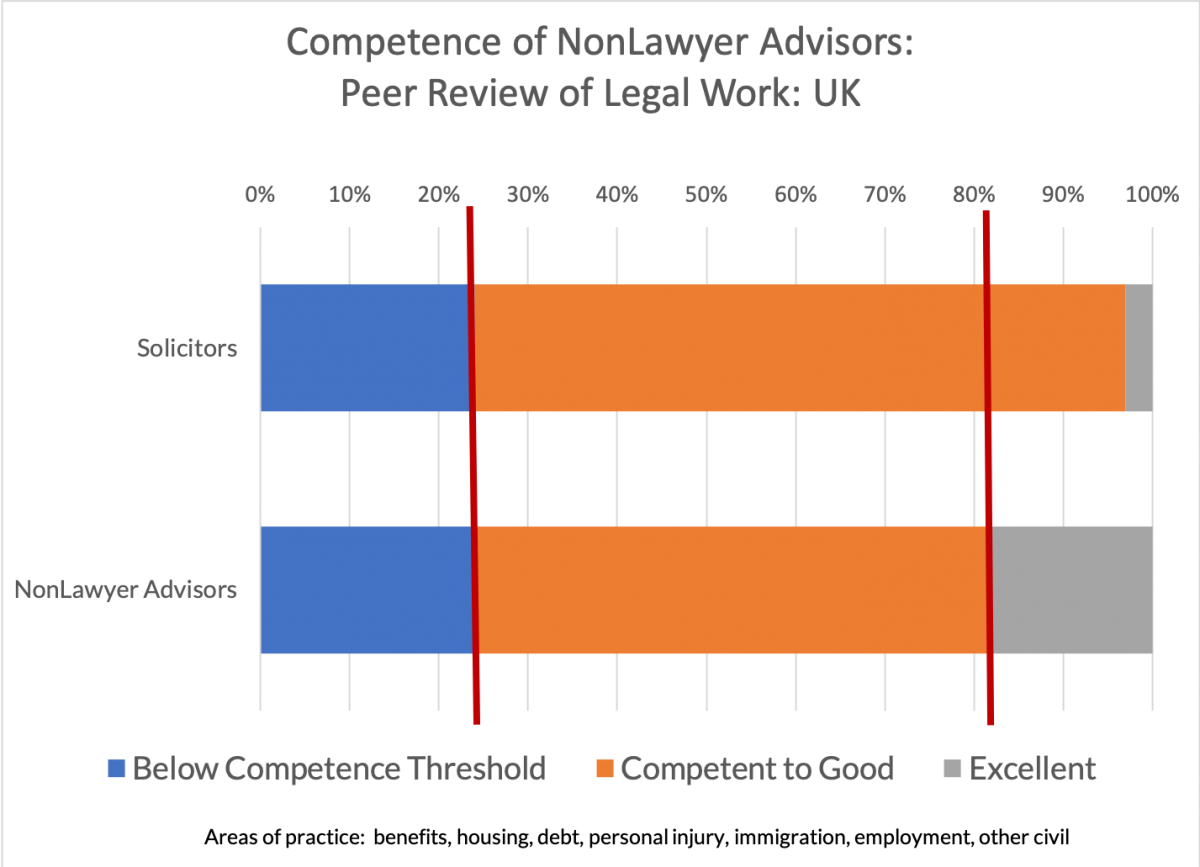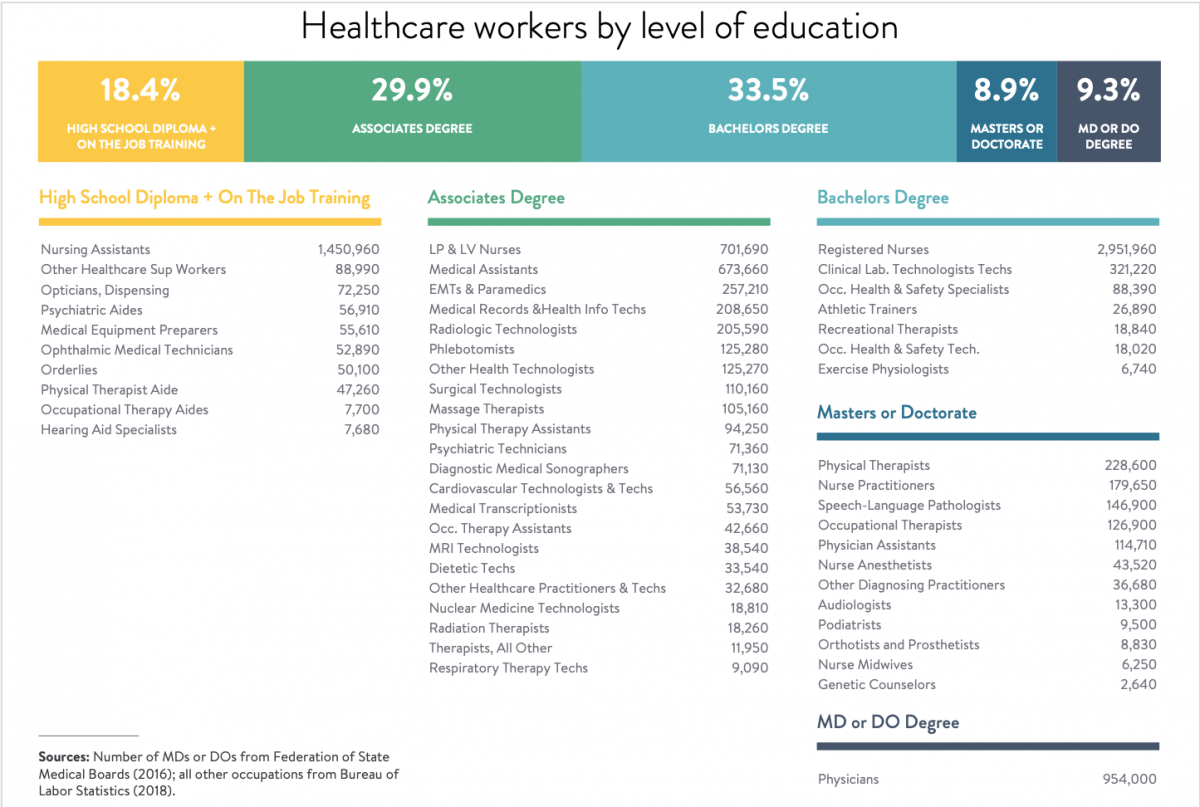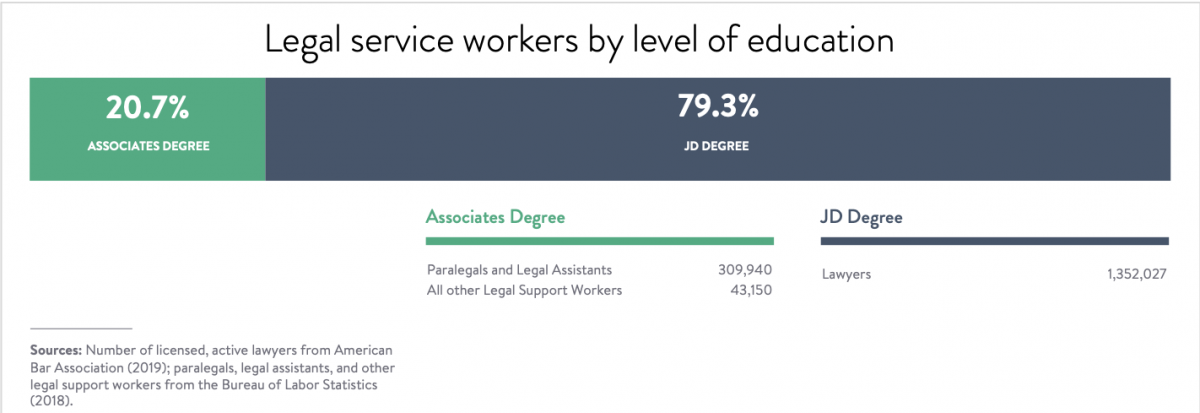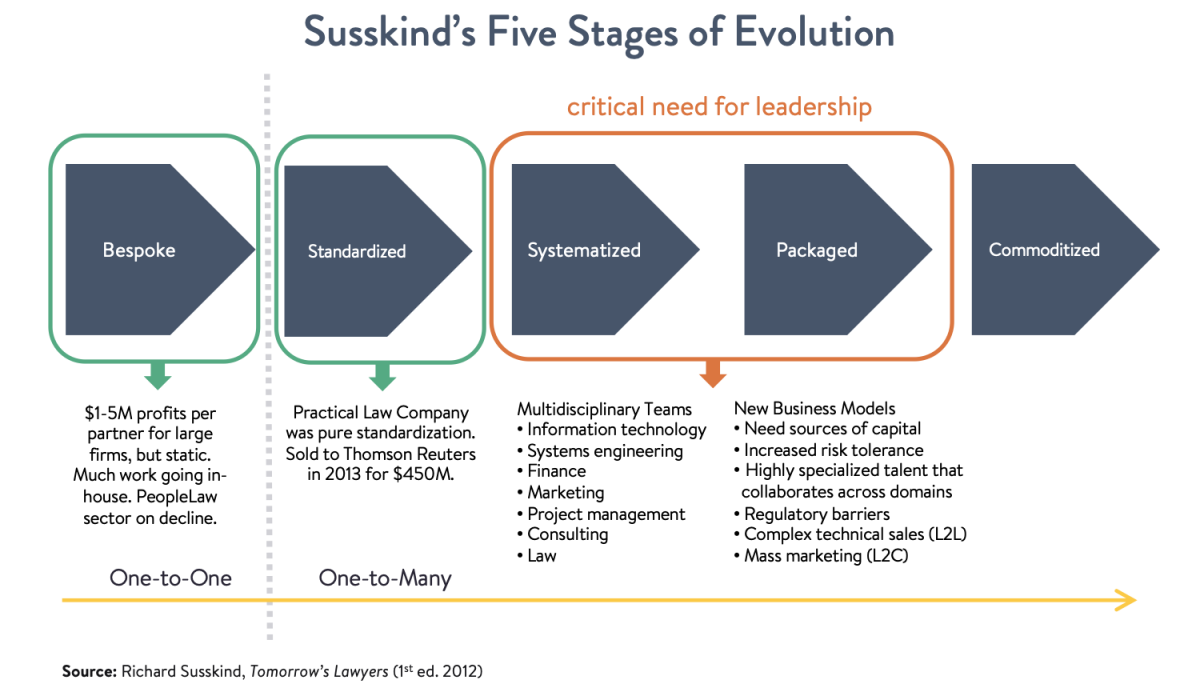Rule Makers vs. Risk Takers
Editor's Note: Although Professor Bill Henderson's talk on the future of legal services has been postponed, we're thrilled to share his recent post on Legal Evolution, in which he calls for us all to be Risk Takers—and to support Risk Takers—who have their eye on the public good when it comes to the regulatory reform movement. We hope you will join us for his talk in Denver when it is rescheduled in the near future.
Some realism on the regulatory reform movement
Imagine a legal sector neatly divided into two groups: the Rule Makers and the Risk Takers. With evidence piling up that the legal market is not working for ordinary citizens, the Rule Makers come together to evaluate possible changes. After the new rules are enacted, the burden shifts to the Risk Takers to build out workable solutions.
If we apply this simple model to the US legal sector, it appears that the Rule Makers are struggling to deliver, as the most high-profile liberalization efforts at the state and national levels are now being shelved or slow-walked. See, e.g., Cheryl Miller, “California State Bar Puts Brakes on Proposed ‘Regulatory Sandbox,’” Am. Law., Mar. 13, 2020 (citing “political headwinds” as reason for tabling ATILS Task Force recommendations); Brenda Sapino Jeffreys, “ABA Approves Innovation Resolution, With Revisions to Limit Regulatory Changes,” Law.com, Feb. 17, 2020 (discussing passage of watered down resolution that disavowed any changes to nonlawyer ownership or the unauthorized practice of law).
By disposition, the majority of lawyers are Rule Makers. Indeed, much of the rule-change dialogue can be boiled down to a single question: “Should we let nonlawyers invest their time and capital to solve our access to justice problem?”
The above iceberg image, which is inspired by Rebecca Sandefur, a sociologist and MacArthur Genius at Arizona State, suggests that Rule Makers don’t see or understand the problem they’re trying to solve. This is because so many regulatory reform conversations are among lawyers who (a) lack the resources and methodological skills to define and measure the problem, and (b) are hopelessly conflicted by a desire to protect their own economic turf.
Right now there is a lot of frustration within the progressive wing of the Rule Makers. Yet, let’s have some humility here. If the market were liberalized tomorrow, what would the impact be for ordinary citizens? And how long would it take for those benefits to diffuse? “Don’t know” and “not sure” are the honest answers.
Because we’re bothered by the status quo, we have a tendency to conflate market liberalization with a big win for access to justice. See Post 106 (discussing issue in context of California). Unfortunately, the A2J problem is much bigger and more complex than we’re admitting. As a result, a complete solution will likely require entirely new institutions and regulatory frameworks built from the ground up in consultation with skilled social scientists. There is much work ahead. Who’s going to do it?
The bottom of the iceberg
In the fall of 2018, a research team led by Rebecca Sandefur surveyed the legal technology landscape and discovered a remarkable 322 tools designed to assist nonlawyer users “with a range of both criminal (e.g., arrest, police stops, expungement) and civil (e.g., family, housing, health, employment) justice problems.” See Sandefur et al., Legal Tech for Non-Lawyers: Report of the Survey of the US Legal Technologies at 3 (2019). More than half of the tools enabled users to take some type of action on a justice problem, such as “producing a legal document, compiling evidence, diagnosing a legal problem, or resolving a dispute.” Id. And approximately three quarters were free.
Despite the large number of tools, Sandefur and her team observed that they were not well aligned with the most common types of legal problems, nor were they especially easy to use, particularly for the most needy populations. The actors who make these tools—a wide range of “for-profit companies, startups, nonprofit organizations, and private individuals”—aren’t tied together by a common set of standards. Further, those in closest contact with target clients lack the time, resources and expertise to conduct a rigorous needs analysis and, in turn, translate those learnings into better, more scalable tools.
Arguably, this is a problem of insufficient capital at the biggest bottlenecks. But that’s an incomplete diagnosis. Sandefur writes:
[T]here are two other important factors that limit what existing digital legal tools can do: the legal profession’s robust monopoly on the provision of legal advice and the challenges of coordination in contemporary state court systems. Thus, a central responsibility for this situation rests with the justice system itself . . . .
Many working in the field look forward to a day when tools create forms accepted by courts and file them with the appropriate forum immediately upon completion. While this is beginning to happen, implementing standardized forms and getting courts to accept them is a herculean task of coordination that requires every court in every county in a state to accept a new way of doing its work. Even when rules change formally, clerks, judges and other courthouse staff can persist in older patterns, refusing to recognize documents that are officially approved by the court system. The barriers here are not technological, but human. Id. at 15-16.
Elsewhere, Sandefur reviews the empirical literature showing that nonlawyer guides and advocates can sometimes deliver better and more efficient outcomes than lawyers. See Sandefur, “Access to What?,” Daedalus at 52 (Winter 2019) (citing studies in divorce, unemployment benefits, evictions, child custody, and disputes over public benefits with government agencies).
At the January 2020 AALS meeting, I was on a panel with Sandefur, who delivered a showstopper presentation on the efficacy of nonlawyer representation. Sandefur walked the audience through various empirical findings from the UK, US, and Canada showing that people routinely seek out nonlawyers for legal advice (there’s demand); even when lawyers are free, people sometimes prefer nonlawyer assistance (there’s a preference); and in low complexity cases, which is the majority of legal matters, nonlawyers generally achieve results on par with lawyers (there’s competence).
To further illustrate Sandefur’s point, below is a chart from her presentation showing that in a peer review of UK solicitors and nonlawyer advisors, the nonlawyers performed as good or better than their licensed solicitor counterparts:
Sandefur, “Legal Advice: Consumer Demand, Nonlawyer Competence, & Public Harm,” 2020 AALS Annual Meeting (citing Moorhead et al, Quality and Cost: Final Report on the Contracting of Civil, Non-Family Advice and Assistance Pilot. London:TSO, 2001, tbl. 5.6).
More sobering, however, is the fact that when lawyers do deliver superior outcomes, the critical factor is often their mere physical presence in the courtroom, rather than substantive or procedural knowledge. This is because of the endemic lack of representation often creates an environment where things like burden of proof and rules of evidence are brushed aside in the interests of efficiency, particularly in cases involving eviction, debt collection, and unemployment benefits. “When lawyers are present on both sides of cases, courts act more like courts, following the rules they made to guide their own activities.” Access to What? at 52.
These are problems that run much deeper than Rule 5.4 (prohibition on nonlawyer ownership of law firms) or even the constraints on who can provide legal services.
We only have budget for words
After the passage of ABA Resolution 115, many lawyers in the House of Delegates were congratulating themselves as if they’d accomplished something truly importance. And certainly, the opening lines were inspired.
RESOLVED, That the American Bar Association encourages U.S. jurisdictions to consider innovative approaches to the access to justice crisis in order to help the more than 80% of people below the poverty line and the many middle-income Americans who lack meaningful access to effective civil legal services,
FURTHER RESOLVED, That the American Bar Association encourages U.S. jurisdictions to consider regulatory innovations that have the potential to improve the accessibility, affordability, and quality of civil legal services, while also ensuring necessary and appropriate protections that best serve clients and the public . . . .
Upon passage of Res. 115, the president of the New York State Bar Association exclaimed that it’s “great day for lawyers [and] their clients.” Of course, as discussed in the same article, the New York delegation successfully led the charge to ensure that the final paragraph of Res. 115 explicitly disavowed any changes to nonlawyer ownership or the unauthorized practice of law. See “ABA Approves Innovation Resolution, With Revisions to Limit Regulatory Changes,” supra.
For the moment, let’s presume good faith by the entire ABA House of Delegates. What exactly did Resolution 115 accomplish? Basically it recommended that other lawyers get together to study, collect data, and solve very difficult problems related to cost and access to justice. Further, the Resolution appropriated exactly zero dollars to advance in the innovation agenda. Indeed, the ABA as an entity is bleeding money and losing members, as are most of the state bar associations.
On a similar note, in their memo to the Trustees of the State Bar of California, the ATILS Task Force suggested that the regulatory sandbox would likely require “grant funding” to set up and that the Task Force “recommends that the State Bar convene a funders summit to explore the feasibility of philanthropic start-up funding.” ATILS Agenda Item B.3 at 9. In other words, the largest bar association in the wealthiest state in the nation is unable or unwilling to finance its own regulatory restructuring for the benefit of the citizens of California. Even more remarkable, this modest recommendation was tabled because it was viewed as too politically controversial to vote on. This is quite a statement on the state of legal self-regulation.
Folks, it’s getting hard to take the Rule Makers seriously. Let’s hope that Arizona or Utah get it right. See Post 112 (praising Utah and its leadership committing to a regulatory sandbox).
A point of comparison
As I write this post, all of us are relying on our healthcare system to get us through the COVID-19 pandemic. Although we might complain about the high cost of healthcare, few of us complain about its quality.
Here is a statistic that surprises many people—fewer than 1 in 10 healthcare workers in the US has a medical degree (MD or DO). Below is a breakdown of the workforce by level of education.
When one digs into these various career paths, it is astonishing to observe the large number of medical occupations that require some type of educational certification followed by licensure. What makes this possible are several dozen nonprofit organizations that build out knowledge and put it in a form where it can be taught and tested. Further, more than 80% of this workforce—all of whom are directly involved with patient care—have no more than a bachelor’s degree.
In comparison, nearly 8 in 10 legal service workers have a law degree. Here’s the breakdown.
Despite a surfeit of highly educated professionals, how well is our legal “system” working? Here are few data points:
- 86% of low-income American with a civil legal problem receive inadequate or no legal help. See Legal Services Corporation, The Justice Gap at 6 (2017).
- 76% of all cases in state courts have at least one self-represented litigant. See National Conference of State Courts, The Landscape of Civil Litigation in State Courts at iv (2015).
- The typical small firm lawyer spends almost as much time per day looking for legal work (2.0 hrs) as performing legal work (2.3 hrs). Clio, Legal Trends Report at 10-15 (2017).
- Lawyers and law firms are caught in a pattern of “consensual neglect” where no one take responsibility for the industry’s bleak statistics. Thomson Reuters, Report on the State of the Legal Market at 3 (2018).
Over the last several decades, a slow-moving pandemic has swept through the US legal profession. It’s moved so slowly that we’re blind to its consequences. Instead, we’re hunkered down trying to protect our own small square of turf. It doesn’t occur to us that new thinking and a broader group of stakeholders might grow the pie for everyone, including the public.
The motivations of Risk Takers
The legal sector has its full allotment of Risk Takers who see opportunities to improve some aspect of modern law practice. If you doubt this statement, take a look at the Thomson Reuters’ market map or the LawGeex’s legal AI landscape.
The proliferation of Risk Takers is primarily a function of people who see what’s possible under existing constraints. Although Rule Makers could, in theory, expand or de-risk the universe of innovation opportunities, the Risk Takers are generally focused on what they can do today without asking for permission.
In my own thinking, I’ve found it useful to use Richard Susskind’s familiar five stages of evolution with additional overlays designed to show the transition from one-on-one services to one-to-many legal solutions.
Although many people are drawn to one-to-many opportunities because of the potential to create enormous wealth, such as the sale of PLC to Thomson Reuters, a huge number of Risk Takers are pulled into this field by the opportunity to create something new and better, often for the benefit of the industry. To deliver for this latter group, we need Risk Takers who are willing to step into positions of leadership that are, in reality, positions of sacrifice and service.
In the above graphic, virtually all of these leadership needs are connected to the immense complexity associated with systemizing and packaging legal solutions (i.e., the orange rectangle). A good example is Toby Brown’s creation of the SALI Alliance (Standards Advancements for the Legal Industry) or the regulatory and lawyer development efforts undertaken by IAALS during the Kourlis-Gerkman era and now being carried forward by Scott Bales. Others include Jayne Reardon at the Illinois Supreme Court Commission on Professionalism (2civility.org), who has tirelessly raised awareness on industry changes throughout Illinois and the nation; the folks at Diversity Lab, who are using clever ways to set off waves of improved diversity and inclusion practices among influential law firms and legal departments; and IFLP, which was created by Risk Takers trying to connect the shared interests of the emerging one-to-many legal sector with the next generation of legal professionals struggling to launch their careers.
By and large, the dynamism in the legal sector is powered by a relentless growth in market opportunities, with Risk Takers supplying capital, ideas, and the labor necessary to achieve alignment among stakeholders. But not everything that can be done or should be done is necessarily going to result in someone making a profit.
Liberalization versus the need for new institutions
The more I study the legal market, the less convinced I’ve become that market liberalization can be a complete solution (though, in my view, it would definitely help).
The incompleteness of the solution is particularly true in the area of PeopleLaw, where the combination of low financial stakes and human complexity makes it very difficult to build scalable businesses. As a result, we are going to need new institutions, such as government-sponsored online dispute resolution, see Post 099 (Civil Resolution Tribunal), and intergovernmental entities that move state and federal courts and agencies toward unified, human-centered portals, filings and workflows. Likewise, there should be interagency support for the legal technologies designed to help nonlawyer users solve their justice problems—if we have 322 tools in the current harsh environment, imagine what we’d have with better soil and some regular caretaking.
None is this is likely to happen, or happen fast enough, if consensus within the bar is a precondition of all regulatory reform. For the third time in this essay: Lawyers lack the time, knowledge and expertise to solve the problems at hand; moreover, they’re conflicted.
In my view, A2J progress depends upon the emergence of a new class of regulatory Risk Takers who have the courage to use brunt power to overcome the objections of the bar plus the political skills necessary to wrangle together sufficient public resources.
State supreme courts as regulatory Risk Takers
In my research, the closest I’ve found to a workable blueprint is Ben Barton’s analysis of state supreme courts’ “inherent authority” doctrine. See Barton, Glass Half Full: The Decline and Rebirth of the Legal Profession ch. 2 (2015). The leading case on this topic is In re Day, which centered on a decree by the Illinois Supreme Court that conditioned admission to bar on the completion of three years of law school combined with a written bar exam. Because this was an existential threat to students at existing two-year law schools, who would have been automatically licensed under the old regime, they successfully lobbied the Illinois legislature for an exemption.
Yet, “[w]hen these applicants petitioned the Illinois Supreme Court to be licensed, the Court invalidated the Act because the legislature had ‘assumed the exercise of power properly belonging to the courts.'” Barton at 42 (citing In re Day, 54 N.E. 646, 648 (1899)). The court’s analysis was entirely grounded in separation of powers principles under the IL State Constitution. Barton writes:
In re Day was favorably featured in a contemporaneous Harvard Law Review article and was widely cited and imitated afterwards. By 1936, the inherent authority of state supreme courts over lawyer regulation was well settled enough that the ABA Journal published an article on the matter, and the courts were using their inherent authority to investigate, and even sua sponte prosecute, UPL. Id. at 43.
Admittedly, it’s profoundly ironic that one of the primary mechanisms used to erect protectionist barriers would now be our best shot at unwinding their most damaging consequences.
State supreme court justices, particularly those who are appointed to the bench (~30), are like Dorothy from The Wizard of Oz—on their feet are ruby slippers that give them all the power they need. To use it effectively, however, justices need to carve out sufficient white space from the daily grind of deciding the state’s most important cases and managing a sprawling judicial bureaucracy. That’s not easy. Likewise, they have to acknowledge the futility of waiting on the consensus of conflicted, non-expert lawyers; and they have to absorb the insights social scientists like Rebecca Sandefur and Gillian Hadfield, who have the skill and perspective to see the bottom of the iceberg.
These are uncomfortable acts for supreme court justices. Yet, it can definitely happen, as the Utah Supreme Court has so wonderfully proven. See Post 112 (discussing conditions that lead to the creation of Utah’s regulatory sandbox); Post 099 (discussing Utah’s embrace of ODR). In addition, in the year 2020, IAALS is set up to be the ideal support network.
Conclusion
I am an optimist by nature. And I generally don’t like to scold. But folks, it’s time we each play our part to be Risk Takers, and support Risk Takers, who are laser-focused on the long-term public good.







